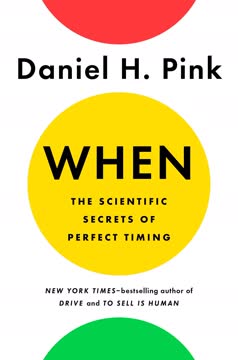Key Takeaways
1. The Business Model Canvas: A Strategic Tool for Visual Business Planning
The Business Model Canvas is a valuable strategic tool which is used to conceptualise new business models or to document existing ones.
Visual thinking approach. The Business Model Canvas (BMC) is a revolutionary strategic tool developed by Alexander Osterwalder and Yves Pigneur. It offers a visual and design thinking approach to business modeling, allowing entrepreneurs and managers to create, deliver, and capture value in a single-page format. This non-linear process enables the creation of a visual system that is accessible, readable, and easy to understand for everyone involved.
Simplifying complexity. The BMC simplifies the complex process of business planning by organizing ideas into a structured template. This approach facilitates:
- Clear definition of priorities
- Creation of concrete action plans
- A creative and adaptable approach
- Improved customer interactions
- Enhanced communication between employees
By providing an overview of the business model under construction, the BMC allows for quick and effective transition from ideation to action, making it particularly suitable for small businesses and startups with less hierarchical structures.
2. Nine Building Blocks: The Core Components of the Business Model Canvas
The matrix consists of nine interrelated blocks that illustrate all the activities of a company.
Comprehensive framework. The Business Model Canvas comprises nine interconnected blocks that cover all essential aspects of a company's operations:
- Key Activities
- Key Partnerships
- Key Resources
- Customer Segments
- Channels
- Customer Relationships
- Value Proposition
- Cost Structure
- Revenue Streams
Synergistic layout. These nine blocks are carefully arranged on the canvas to create synergies between them. This layout results in a unique strategy for each company that employs the BMC. The visual representation allows for easy identification of relationships and dependencies between different aspects of the business model, fostering a holistic understanding of the company's value creation process.
3. Creating Value: Key Activities, Partnerships, and Resources
Key activities are essential to the company, since a customer value proposition is created through them, which indirectly generates income.
Value creation triad. The BMC emphasizes three critical components for creating value:
-
Key Activities: These are the essential tasks a company performs to deliver its value proposition. They can be categorized into:
- Manufacturing activities
- Solution development (services)
- Platform/network-related activities
-
Key Partnerships: Collaborations that strengthen a company's position in the market. Types include:
- Strategic alliances
- Coopetition (cooperation with competitors)
- Joint ventures
- Buyer-supplier relationships
-
Key Resources: The assets a company relies on to maintain its economic activity. These can be:
- Physical (e.g., facilities, equipment)
- Intellectual (e.g., patents, brands)
- Human (e.g., skilled employees)
- Financial (e.g., cash, lines of credit)
By focusing on these three areas, companies can optimize their value creation process and strengthen their competitive advantage.
4. Understanding Customers: Segments, Relationships, and Channels
The majority of companies owe their prosperity to their customers, who are the driving force behind many economic activities.
Customer-centric approach. The BMC emphasizes the importance of understanding and catering to customers through three interconnected elements:
-
Customer Segments: Identifying and targeting specific groups of customers with similar needs or characteristics. Types of segments include:
- Mass market
- Niche market
- Segmented
- Diversified
- Multi-sided platforms
-
Customer Relationships: Defining and nurturing the type of relationship a company wants to establish with each customer segment. Options include:
- Personal assistance
- Self-service
- Automated services
- Communities
- Co-creation
-
Channels: Determining how a company communicates with and reaches its customer segments to deliver its value proposition. Channels can be:
- Direct (e.g., sales force, web sales)
- Indirect (e.g., partner stores, wholesalers)
By aligning these three elements, companies can create a cohesive customer strategy that drives growth and loyalty.
5. Financial Balance: Cost Structure and Revenue Streams
Generating revenue streams is therefore crucial, since the survival of any business depends on it.
Financial equilibrium. The BMC addresses the financial aspects of a business model through two key components:
-
Cost Structure: Identifying and managing the main costs incurred by operating the business model. Considerations include:
- Fixed vs. variable costs
- Economies of scale
- Economies of scope
-
Revenue Streams: Determining how the company generates income from each customer segment. Common types include:
- Asset sale
- Usage fee
- Subscription fees
- Lending/Renting/Leasing
- Licensing
- Brokerage fees
- Advertising
By balancing these two elements, companies can ensure their business model is financially viable and sustainable in the long term. The BMC encourages businesses to explore diverse revenue streams and optimize their cost structure to maximize profitability.
6. Practical Application: Organizing a BMC Workshop
Users actively think about what they should place in each box in the model by asking themselves a series of questions.
Interactive workshop approach. The BMC is designed to be used in a collaborative, interactive workshop setting. Key elements of an effective BMC workshop include:
- Large canvas: Draw or print a large-scale BMC on a wall or table
- Post-it notes: Use sticky notes to capture and organize ideas
- Cross-functional team: Involve participants from various departments
- Open discussion: Encourage brainstorming and idea sharing
Workshop process:
- Introduce the BMC concept and its nine building blocks
- Provide each participant with Post-it notes and pens
- Begin with any block and encourage participants to generate ideas
- Place ideas on the canvas, allowing for easy rearrangement
- Discuss and refine ideas as a group
- Iterate and refine the model over multiple sessions
This approach fosters creativity, collaboration, and a comprehensive understanding of the business model among all participants.
7. Case Study: Revitalizing a Struggling Bookstore
As the book sector has undergone many changes in recent years, such as the introduction of online sales, bookstores are becoming less and less busy.
Applying BMC to real-world challenges. The case study of a struggling bookstore demonstrates how the Business Model Canvas can be used to analyze and revitalize an existing business:
-
Current situation analysis:
- Declining foot traffic due to online competition
- Strong reputation for literature recommendations and academic books
- Facing new direct competitors in the school book market
-
BMC workshop outcomes:
- Customer Segments: Refocus on loyal customers and institutions
- Value Proposition: Emphasize expert advice and competitive pricing
- Channels: Develop online presence to complement physical store
- Key Activities: Introduce literary events and employee training
- Key Partnerships: Strengthen relationships with suppliers and distributors
-
Implemented changes:
- Launched a user-friendly website for online orders
- Organized regular author readings and book club meetings
- Negotiated better terms with suppliers to improve pricing
- Invested in staff training to enhance customer service
By using the BMC, the bookstore was able to identify its strengths, address weaknesses, and develop a more customer-centric and adaptable business model.
8. Limitations and Criticisms of the Business Model Canvas
The Business Model Canvas focuses on the structure and inner workings of the company, and does not take into account (or only considers to a very limited extent) external factors, such as competition.
Recognizing BMC limitations. While the Business Model Canvas is a powerful tool, it's important to acknowledge its limitations:
-
Lack of strategic focus: The BMC prioritizes value proposition over broader strategic considerations, which may not suit all business types.
-
Limited applicability: More suitable for single-activity companies or startups than complex, multi-disciplinary organizations.
-
Competitive blindness: Minimal consideration of external factors like competition, which can significantly impact business strategy.
-
Static analysis: Provides a snapshot of the current situation without accounting for long-term evolution or market dynamics.
-
Oversimplification: The basic structure may not capture the full complexity of some business models or industries.
Understanding these limitations allows users to supplement the BMC with other strategic tools and frameworks for a more comprehensive business analysis.
9. Complementary Models: Enhancing the BMC's Strategic Dimension
As the Business Model Canvas has some limitations, including in particular the lack of a strategic dimension, it is worth considering combining it with other tools so that they can complement one another.
Integrating strategic frameworks. To address the BMC's limitations, it can be combined with other strategic tools:
-
BCG Matrix:
- Evaluates product portfolio based on market growth and market share
- Helps prioritize resources and guide long-term strategy
- Complements BMC by adding product lifecycle considerations
-
Porter's Five Forces:
- Analyzes industry attractiveness and competitive intensity
- Examines threat of new entrants, supplier power, buyer power, threat of substitutes, and competitive rivalry
- Enhances BMC by providing deeper insights into external factors
-
SWOT Analysis:
- Identifies strengths, weaknesses, opportunities, and threats
- Offers a balanced view of internal and external factors
- Complements BMC by adding a more comprehensive strategic perspective
By integrating these tools with the BMC, businesses can create a more robust and strategically-oriented business model that accounts for both internal operations and external market dynamics.
Last updated:
Review Summary
The Business Model Canvas receives mixed reviews, with an average rating of 3.61 out of 5. Some readers find it simple and clear, praising its explanation of the Business Model Canvas concept and its limitations. Others criticize its lack of depth and new insights. Positive reviews highlight its effectiveness for beginners and its concise presentation. Negative reviews mention disappointment with the shallow coverage and lack of in-depth analysis. Some readers appreciate the book's focus on implementation and complementary tools, while others feel it leaves much to be desired in terms of comprehensive understanding.
Similar Books










Download PDF
Download EPUB
.epub digital book format is ideal for reading ebooks on phones, tablets, and e-readers.




